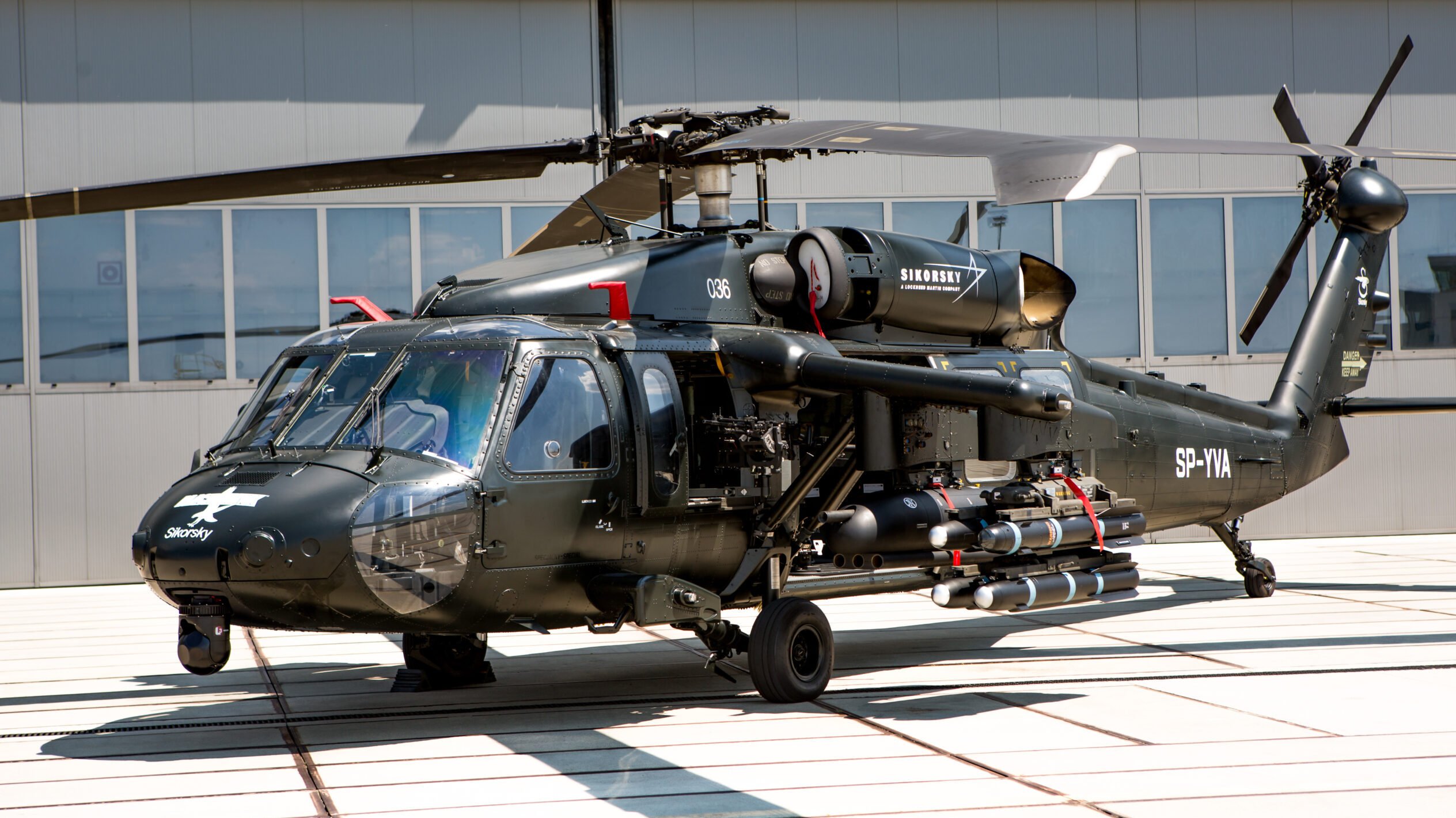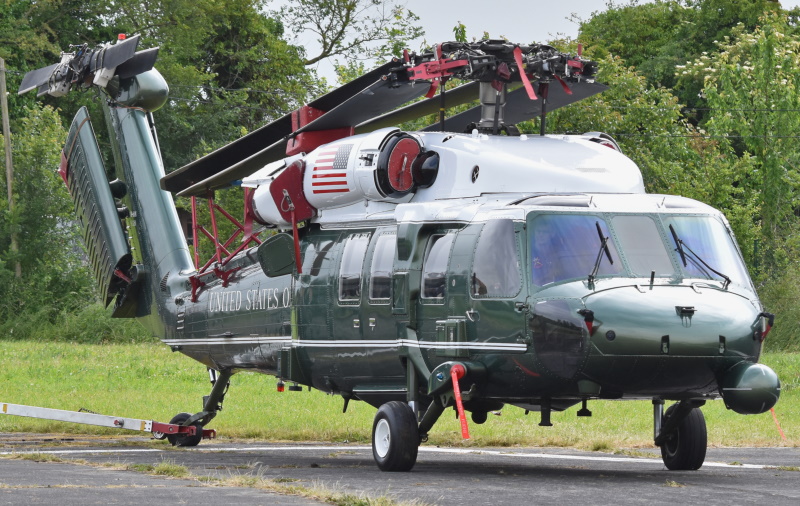Inside the Sikorsky S 70: What Establishes This Helicopter Apart from Its Rivals
Inside the Sikorsky S 70: What Establishes This Helicopter Apart from Its Rivals
Blog Article
High-Performance Multi-Role Rotorcraft Featuring Advanced Cockpit Technologies and Integrated Sensor Equipments
The realm of rotorcraft innovation has seen notable developments in recent times, especially in the world of high-performance multi-role rotorcraft geared up with advanced cockpit innovations and seamlessly integrated sensing unit systems. These innovations have not only augmented the functional abilities of rotorcraft but have likewise significantly influenced modern-day air travel procedures on different fronts. From enhanced mission convenience to improved operational effectiveness, the convergence of sophisticated cabin technologies and incorporated sensor systems has ushered in a new era of possibilities for rotorcraft applications. In the complying with conversation, we will certainly explore the development of rotorcraft innovation, look into the world of innovative cockpit technologies, and analyze the implications of incorporated sensing unit systems on the operational adaptability and effectiveness of modern rotorcraft.
Evolution of Rotorcraft Innovation
The evolution of rotorcraft modern technology has actually been noted by substantial advancements in aerodynamics, products, and propulsion systems, forming the abilities and efficiency of modern-day rotorcraft. Wind resistant improvements have boosted the effectiveness and ability to move of rotorcraft, permitting for boosted rate, agility, and security during trip (sikorsky s 70). Advancements in materials, such as making use of composite products and progressed alloys, have actually caused lighter yet stronger rotorcraft frameworks, improving overall efficiency and sturdiness. Additionally, innovations in propulsion systems, including much more powerful engines and cutting-edge propulsion modern technologies, have actually allowed rotorcraft to accomplish greater altitudes, faster speeds, and higher payloads.
These innovations have not only changed the capacities of rotorcraft however have likewise broadened their applications throughout various industries, consisting of armed forces, commercial, and emergency situation services. The continual development of rotorcraft modern technology remains to drive development in the area, pressing the limits of what is possible and shaping the future of upright flight.
Advanced Cockpit Innovations
Structure upon the foundational developments in aerodynamics, products, and propulsion systems, the realm of rotorcraft modern technology currently moves emphasis in the direction of introducing Advanced Cockpit Innovations. The integration of innovative technologies within the cabin environment plays a vital function in enhancing the operational capabilities, safety and security, and performance of contemporary rotorcraft. sikorsky s 70. Advanced Cockpit Innovations include a wide array of functions created to offer pilots with enhanced situational understanding, streamlined data monitoring, and user-friendly control interfaces
Among the essential innovations in cockpit design is the execution of glass cabins, which change typical analog determines with high-resolution screens. These electronic systems provide personalized formats, real-time data assimilation, and boosted readability, making it possible for pilots to accessibility crucial details at a look. Moreover, advanced avionics systems, such as fly-by-wire controls and enhanced reality display screens, are reinventing exactly how pilots interact with the airplane, enabling for precise control and boosted decision-making capabilities.


Including innovative cockpit technologies not only enhances pilot efficiency however additionally adds to general mission effectiveness and security in complex functional atmospheres. By leveraging modern technologies within the cabin, rotorcraft producers are establishing brand-new requirements for functional excellence and mission success.
Integrated Sensing Unit Systems
With the development of rotorcraft modern technology, the integration of advanced Integrated Sensor Equipment has actually ended up being extremely important in improving functional efficiency and safety. These Integrated Sensing unit Solutions incorporate a wide variety of innovations that provide essential information for different functions such as navigating, monitoring, targeting, and ecological tracking. By flawlessly integrating sensing units like radars, cams, lidar, and infrared systems right into rotorcraft, drivers can benefit from improved situational awareness, boosted goal capacities, and minimized pilot work.
One key advantage of Integrated Sensing unit Equipments is their ability to collect real-time information and offer workable understandings to pilots and mission operators. As an example, advanced radar systems can discover and track targets over cross countries, permitting very early hazard detection and efficient action planning. Additionally, incorporating electro-optical and infrared cams makes it possible for rotorcraft to conduct reconnaissance and monitoring objectives with accuracy and accuracy.
In essence, the assimilation of cutting-edge sensing unit modern technologies into rotorcraft not just enhances operational efficiency however also contributes dramatically to general objective success and staff security. As rotorcraft continue to progress, the role of Integrated Sensing unit Solution will certainly continue to be at the center of innovation in the aerospace industry.
Operational Convenience and Efficiency
Enhancing functional her comment is here convenience and performance in rotorcraft is an all-natural progression from the combination of sophisticated Integrated Sensing unit Equipments. By leveraging the data and insights supplied by these advanced sensor systems, rotorcraft can maximize their efficiency throughout various missions and atmospheres.
Operational convenience includes the capability of rotorcraft to adapt to different duties and circumstances efficiently. With innovative cockpit innovations and incorporated sensing unit systems, rotorcraft can perfectly change in between tasks such as search and next rescue, medical emptying, security, and a lot more. This flexibility improves the rotorcraft's capacity to meet varied functional needs without needing comprehensive reconfiguration.
Efficiency in rotorcraft procedures is essential for taking full advantage of goal performance and resource usage. Integrated sensing unit systems play a critical function in boosting operational efficiency by supplying real-time data on weather conditions, surface mapping, target tracking, and a lot more. This information enables pilots to make enlightened decisions promptly, enhance trip courses, save fuel, and improve overall goal performance.
Influence on Modern Aviation Workflow

Furthermore, the integration of innovative sensing units promotes enhanced mission planning and implementation, enabling rotorcraft to perform a broad range of jobs with improved precision. From search and rescue procedures to aerial firefighting and legislation enforcement objectives, the capacities of modern-day rotorcraft furnished with advanced cockpit technologies and integrated sensor systems are unparalleled.
In addition, the effect of these advancements prolongs beyond functional effectiveness to cost-effectiveness and sustainability. By maximizing flight paths, fuel consumption, and upkeep schedules, high-performance rotorcraft equipped with advanced cockpit innovations and sensing units add to decreasing operational expenses and ecological impact, making them indispensable possessions in modern aviation procedures.
Final Thought
To conclude, the high-performance multi-role rotorcraft with innovative cabin technologies and incorporated sensor systems stands for a substantial advancement in aviation innovation. These developments improve functional adaptability and performance, ultimately influencing modern aeronautics procedures in a positive means. The assimilation of these innovative innovations enables internet boosted capacities and performance in numerous objective circumstances, showcasing the proceeded development of rotorcraft innovation in the aviation sector.
The world of rotorcraft modern technology has actually seen significant innovations in current times, particularly in the world of high-performance multi-role rotorcraft furnished with advanced cabin innovations and flawlessly integrated sensing unit systems. From boosted objective adaptability to enhanced operational efficiency, the merging of innovative cockpit modern technologies and incorporated sensor systems has actually ushered in a brand-new age of possibilities for rotorcraft applications. In the following conversation, we will certainly check out the evolution of rotorcraft innovation, delve right into the realm of sophisticated cockpit developments, and examine the ramifications of integrated sensor systems on the operational flexibility and effectiveness of contemporary rotorcraft.

Report this page